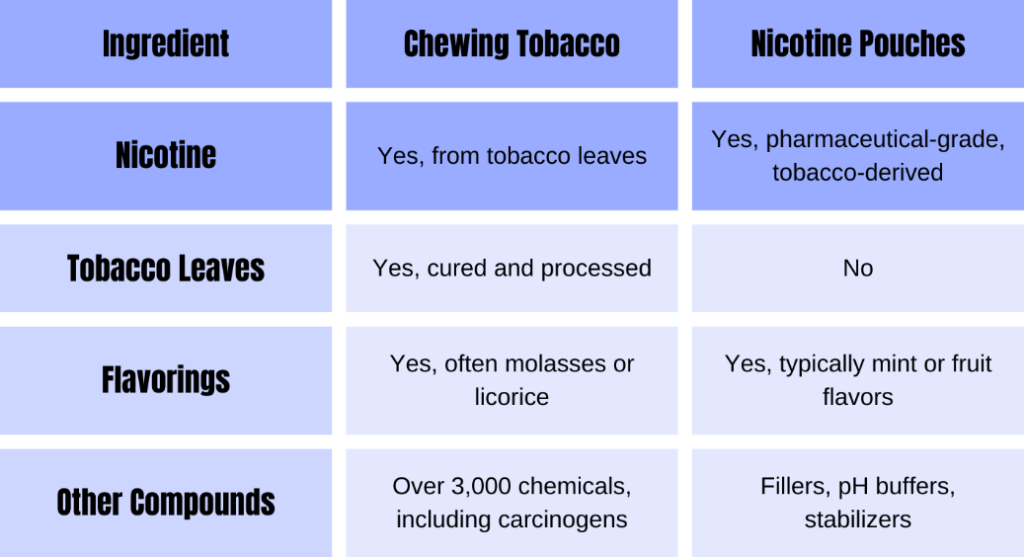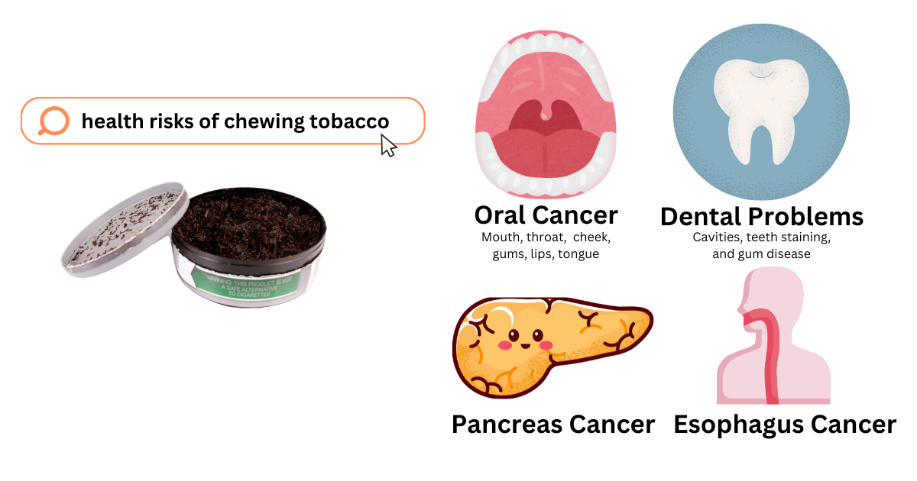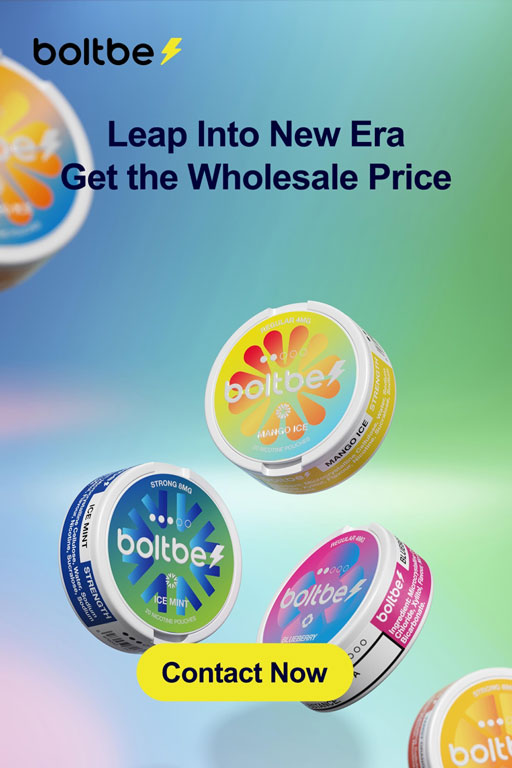Tired of the same old tobacco routine? Curious about those sleek nicotine pouches you’ve seen popping up everywhere? Whether you’re a long-time chewer or someone exploring new options, the world of smokeless tobacco is changing. Both nicotine pouches and chewing tobacco offer unique experiences, but how do they stack up?
This modern user’s guide is here to give you the lowdown. We’ll take an honest look at the history, ingredients, usage, and health considerations of both nicotine pouches and chewing tobacco. By the end, you’ll have the knowledge to make an informed choice that suits your lifestyle and preferences. So, let’s dive in and explore the differences between these two popular nicotine delivery methods.
A Tale of Two Nicotine Products: A Historical Look
Chewing tobacco boasts a long and storied history, deeply intertwined with human culture. Its roots trace back to the Americas, where indigenous peoples like those encountered by Amerigo Vespucci in 1499 used tobacco leaves for various purposes, including thirst quenching, teeth whitening, and hunger suppression. By the 1500s, chewing tobacco had spread throughout Central and South America, valued for its stimulant effects and even believed to possess medicinal properties.
European explorers brought this practice back to the Old World, and by the 17th century, tobacco had become a major export from the American colonies. Chewing tobacco gained particular popularity among sailors and pioneers, who valued its portability and long-lasting nicotine delivery. This legacy continues today, with chewing tobacco holding a special place in certain traditions and communities.
Nicotine pouches, on the other hand, are a recent innovation in the nicotine landscape. While the concept of pre-portioned pouches containing nicotine dates back to the 1970s with Swedish snus (a tobacco-based product), the first tobacco-free nicotine pouch was registered in 2008 under the name “Zonnic.” This marked a significant departure from traditional smokeless tobacco products.
The popularity of nicotine pouches has surged in recent years, especially after brands like ZYN entered the U.S. market in 2014. Their appeal lies in their discretion, convenience, and the absence of tobacco leaf, meeting the growing demand for smoke-free and cleaner alternatives. This growth shows no signs of slowing down, with new brands and innovative products continually emerging to meet the evolving preferences of nicotine consumers. (Nicokick, National Library of Medicine)
What’s Inside? Breaking Down the Ingredients
Chewing tobacco is made from cured tobacco leaves, which are then often sweetened and flavored with ingredients like molasses or licorice. This seemingly simple combination, however, contains a complex mix of over 3,000 chemicals, including nicotine and a significant number of known carcinogens. These chemicals are packed into various formats, from loose leaves to compact plugs or twists, each offering a slightly different chewing experience.
Nicotine pouches, in contrast, take a different approach. They ditch the tobacco leaf entirely, delivering nicotine through a carefully crafted blend of ingredients. These pouches typically contain pharmaceutical-grade nicotine derived from tobacco plants, combined with a cellulose-based pouch material that serves as a comfortable container. Fillers like microcrystalline cellulose and gum give the pouch its texture and help control the nicotine release. Flavorings, often mint-based, add a touch of enjoyment to the experience.
Here’s a quick comparison of the key ingredients:

While both products deliver nicotine, the absence of tobacco leaf in nicotine pouches significantly alters their chemical composition and potential health implications. However, it’s important to remember that both products can lead to nicotine addiction, and the long-term effects of nicotine pouch use are still under investigation. (University of Rochester Medical Center, PMI Science)
The Ritual vs. The Quick Fix: How They’re Used
Chewing tobacco is a hands-on experience, steeped in ritual. Users typically take a pinch or “wad” of tobacco and place it between their cheek and gum. The act of chewing then releases the tobacco’s flavor and nicotine, which is absorbed through the oral tissues. This process often involves spitting, as the tobacco leaves and saliva mix and become undesirable to keep in the mouth. For many, this ritualistic aspect of chewing tobacco is part of its appeal, fostering a sense of community and tradition.
Nicotine pouches, on the other hand, offer a streamlined and discreet experience. A pouch is simply placed under the upper lip, where it rests comfortably against the gum. Nicotine and flavor are released gradually without the need for chewing or spitting. The pouch itself is small and inconspicuous, allowing for discreet use in various settings. When the nicotine is depleted, the user simply discards the pouch. This modern approach to nicotine delivery appeals to those who value convenience and a cleaner, less noticeable method.
In essence, chewing tobacco offers a more involved, sensory experience, while nicotine pouches prioritize simplicity and discretion. The choice between them ultimately depends on individual preferences and lifestyle.
The Health Lowdown: Weighing the Risks

Moderation is key when it comes to any substance, and nicotine products are no exception. Whether it’s chewing tobacco or nicotine pouches, overuse can lead to a range of health concerns. However, it’s important to understand the specific risks associated with each product to make an informed decision.
Chewing Tobacco: A Well-Known Culprit
Chewing tobacco has a long history of documented health risks. The most serious concern is the heightened risk of various cancers, including oral, esophageal, and pancreatic cancers. This is primarily due to the presence of tobacco-specific nitrosamines (TSNAs), potent carcinogens found in tobacco leaves.
Beyond cancer, chewing tobacco can wreak havoc on your oral health, leading to gum disease, tooth decay, and precancerous lesions called leukoplakia. The nicotine content also contributes to an increased risk of cardiovascular diseases like heart attacks and strokes. Pregnant women are particularly vulnerable, as chewing tobacco has been linked to complications like premature birth and stillbirth.
Nicotine Pouches: A Newer Frontier
While not harmless, nicotine pouches are generally considered a less risky alternative to chewing tobacco. Since they don’t contain tobacco leaf, they lack the same high levels of TSNAs. However, it’s crucial to remember that nicotine itself is addictive, and regular use of pouches can lead to dependence.
While long-term research is still ongoing, some potential risks associated with nicotine pouches include oral health issues (though less severe than with chewing tobacco), cardiovascular risks due to nicotine’s effects on blood pressure and heart rate, and the possibility of gastrointestinal problems like nausea. Additionally, accidental ingestion of pouches by children or pets can lead to nicotine poisoning.
Making Informed Choices
It is essential to be aware of these risks and to use both chewing tobacco and nicotine pouches responsibly. If you choose to use either product, moderation is key. Consult with your doctor to discuss your individual health risks and make informed decisions about your nicotine use.
If you’re looking to quit nicotine entirely, various resources and support options are available to help you on your journey towards better health.
Market Buzz and Your Choices
The smokeless tobacco landscape is evolving rapidly, and nicotine pouches are making a big splash. Their discreetness, convenience, and perceived “cleaner” image have captured the attention of a new generation of nicotine users, particularly in regions with stringent smoking bans. Younger demographics, who may be less drawn to the traditional image of chewing tobacco, are increasingly turning to pouches as a modern alternative.
But chewing tobacco isn’t going anywhere. It still holds a loyal following, especially in rural areas and among those who appreciate its long-standing history and cultural significance. For many, the ritualistic aspect of chewing tobacco and the familiar flavors are simply irreplaceable.
The choice between the two isn’t just about personal preference; it’s also influenced by location and lifestyle. Nicotine pouches are gaining significant traction in urban areas and among those who lead active, on-the-go lifestyles. Chewing tobacco, on the other hand, remains popular in areas with a strong tobacco heritage and among individuals who value tradition.
Companies are responding to these trends by tailoring their marketing and branding efforts. Nicotine pouch brands often emphasize their modern appeal, sleek packaging, and variety of flavors, while chewing tobacco brands focus on heritage, authenticity, and a sense of community.
Ultimately, the choice between nicotine pouches and chewing tobacco is yours. Consider your lifestyle, preferences, and health priorities to determine which product aligns best with your needs. Whether you’re drawn to the ritual of chewing or the convenience of pouches, the smokeless tobacco market offers options to suit every individual.
Choosing Your Path: Nicotine Pouches or Chewing Tobacco?
In the end, the choice between nicotine pouches and chewing tobacco is a personal one. Both offer nicotine delivery, but they do so through different ingredients, methods, and cultural contexts. Chewing tobacco, with its long history and ritualistic use, carries significant health risks due to the presence of tobacco leaf and harmful chemicals. Nicotine pouches, as a newer alternative, eliminate tobacco leaf and many of its associated dangers, but they still deliver addictive nicotine and their long-term effects require further study.
Consider your lifestyle, preferences, and health goals carefully. If tradition and a familiar experience are important to you, chewing tobacco might be your choice. If you prioritize convenience, discretion, and potentially reduced harm, then nicotine pouches might be worth exploring. Whichever path you choose, be informed, use responsibly, and prioritize your well-being.
And if you’re ready to embrace a modern, tobacco-free nicotine experience, check out Boltbe’s wide range of nicotine pouches. Your journey starts here.







